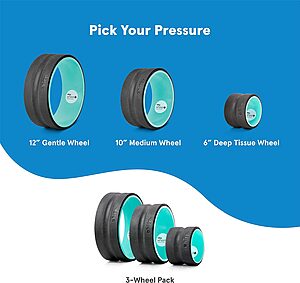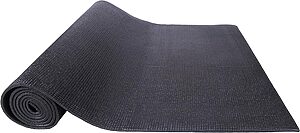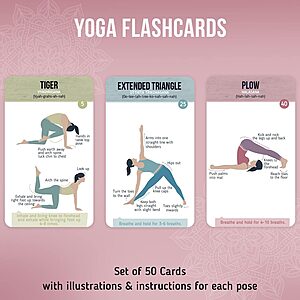Do you love hot yoga? Do you think it’s a great way to work out every day? Well, you might want to rethink your current workout routine. I will tell you the benefits of hot yoga and whether or not it is good for you.
Hot yoga is becoming increasingly popular. But with its popularity comes a lot of questions about whether or not it’s good for you.
In this article, we’ll take a look at some of the most common questions about hot yoga and whether or not it’s good for you every day.

Here’s The Answer To Is Hot Yoga Everyday Good For You
The answer to the question is no; hot yoga is not good for your health. Hot yoga can cause heat stroke and aggravate back and neck aches.
- While many people enjoy the benefits of hot yoga, it’s not a good choice for everyone. Hot yoga can be hard on your body, and if you have any health conditions, you should talk to your doctor before trying hot yoga.
- Also, when done every day, hot yoga can take a toll on your immune system. Hot yoga provides a challenging full-body workout, and you’ll get the health benefits of being in a heated environment. But it’s not for everyone.
- The heat can dehydrate and cause unwanted inflammation. Your body needs time to adjust to this type of exercise, so listen to your body and learn how to do hot yoga safely before jumping in.
- All in all, practising hot yoga every day is not a good idea. It’s better to practice hot yoga for no more than three days a week and on alternate days from your regular yoga routine.
Many people think that more is better when it comes to weight loss, but this isn’t true when you’re dealing with high-intensity exercise such as hot yoga.
What Are The Risks Of Doing Hot Yoga Everyday?

Some of the risks include:
- Heat stroke
- Backache
- Neck ache
- Stress on your body, particularly in the knees and hips. This can cause painful injuries over time. If you have any injuries or medical conditions, make sure you consult a doctor before starting hot yoga. It’s also important to find an instructor who understands your limitations and can help accommodate them in class. An instructor should also recommend a stopping point if you feel faint or dizzy during a practice session; this means it’s time for a water break!
There is a risk of heat stroke
- Heat stroke is a life-threatening medical issue that must be addressed immediately.
- It can cause permanent damage if left untreated.
- Heat stroke may be caused by exercising in hot weather or exercising indoors in a hot room.
Hot yoga can aggravate your back and neck aches
Hot yoga can aggravate your back and neck aches. If you suffer from back pain, hot yoga may not be the best option for you. The heat of Bikram Yoga can increase inflammation in the body, making it harder to heal injuries or chronic pain.
However, if you’re careful about how much practice time you devote to this style of yoga and don’t push yourself too hard physically, it is possible that your body will adjust over time and react better to the heat once again. I
It’s important to practice hot yoga responsibly as there are risks involved in any vigorous physical activity. Just make sure that before starting any new exercise routine (or returning to an old one), your doctor gives their approval first!
Why Isn’t Hot Yoga Always Good For You Every Day?

- Hot yoga can aggravate your back and neck aches. Too much heat can cause your muscles to tighten up and become sore, which can make injuries worse.
- Hot yoga can increase your risk of heat stroke. If you’re not used to doing hot yoga all the time and you get too hot, it’s possible for the body to overheat, which is dangerous.
- Hot yoga can cause muscle strain. Due to all of the movement in hot yoga, it’s easy for muscles in different parts of the body, like shoulders or hamstrings, to get strained if they aren’t used to being stretched out during a class like this one on a regular basis (and sometimes even when they are).
- Hot yoga can cause dehydration. Because there’s so much sweating in hot yoga classes that takes place throughout each class session (especially if you’re doing multiple classes per day), dehydration is very likely under these circumstances as well; thus leaving no room for hydration before or after class, itself begins!
How Can You Make Sure You Are Practicing Hot Yoga Responsibly?
If you want to practice hot yoga responsibly, the following are some of the most important rules to remember:
- Do not overdo it. If you practice hot yoga every day and push yourself too hard in each session, you may be at risk of injuries. It’s best to limit yourself to 3-4 practices per week at most.
- Drink plenty of water during practice and take breaks if needed. Proper hydration is essential for avoiding high levels of dehydration while exercising, especially in hotter temperatures that can lead to heat exhaustion or other health risks if not properly monitored.
- Don’t practice in the evening or during the day when it’s extremely hot outside until you’re an experienced practitioner who knows their limits well enough, not only physically but also mentally (you’ll likely feel exhausted after class!). The same holds true for pregnant women; if at all possible, wait until after giving birth before resuming any type of regular exercise routine, including hot yoga classes. So as not to overexert yourself unnecessarily, which could cause complications during childbirth later down the road.
What’s The Ideal Number Of Hot Yoga Practice Session Per Week?
The ideal number of hot yoga practice sessions per week is 3-4. It is not recommended to do hot yoga every day because it will be too much stress on your body, and it can cause injuries, especially if you are new to this type of exercise.
- Hot yoga is best done in a class because there are many benefits that can only be achieved when you’re doing the exercises with others, such as camaraderie, motivation and encouragement from others.
- Which can help push you further during your workout. It is generally recommended that you start with two to three hot yoga sessions per week. This will allow your body to get used to the intense heat and workout.
- Once your body has adjusted, you can increase the number of sessions per week. However, it is important to listen to your body and not push yourself too hard.
- If you are new to hot yoga, it is best to start with a beginner class. Once you have mastered the basic poses, you can move on to a more advanced class.
Even though hot yoga is an intense practice, you should not push yourself to the point of exhaustion.
How Do You Know When It Is Too Much?
If you are not able to do the poses properly, if you are not able to hold your breath for the entire duration of the pose, and if you are not able to breathe deeply, then it is a sign that hot yoga is too much for your body at this time.
You may need to modify your practice by taking breaks between poses or by reducing the intensity so that they can be done properly while still giving yourself adequate time to reach a state of deep relaxation.
It’s also important that we take breaks after doing hot yoga regularly so that our bodies have time to recover and restore themselves before going back into extreme heat once again.
This will help prevent any unwanted adverse reactions from occurring when practising hot yoga on a daily basis, such as muscle cramps due to dehydration or exhaustion in general, which can lead to more serious health problems such as heart attacks, among others.
Signs That You Are Practicing Hot Yoga Too Much
- If you are experiencing headaches, nausea, dizziness, faintness and palpitations of the heart, it is time to slow down.
- If you have difficulty breathing or sweating profusely, you need to take a break from hot yoga.
- If you feel hot during the practice, even if it is cold outside, then this is an indication that your body has become overheated and needs to be cooled down immediately.
- The same goes for feeling cold when others around you are fine with the temperature in class; this means that your body is not adjusting properly to the heat and should be monitored closely by a physician before resuming practice at all levels of intensity.
Is There A Limit To How Much Hot Yoga You Should Do In A Week?
The answer is no. There is no limit to how much hot yoga you should do in a week, as long as your body can handle it.
However, if you are not healthy and don’t have the physical fitness or strength to do hot yoga every day, then it may be better for you not to do hot yoga every day.
Hot yoga is beneficial for everyone who does it properly and doesn’t overdo it because of their health issue (e.g., heart disease).
Just make sure that when practising this type of exercise routine, take breaks when needed so your body has time to recover from the harsh conditions inside a sauna-like room with high heat and humidity levels.
How To Modify Your Hot Yoga Practice To Not Do It Every Day?

A good way to modify your hot yoga practise is by making sure you don’t do it every day. Why? Although the benefits of hot yoga are countless, there are risks associated with doing a practice too frequently or for an extended period of time.
If you’ve been practising hot yoga for a while and have noticed that your body is feeling fatigued, sore or achy after class, it might be time to take a break from attending classes at your studio altogether.
This could mean taking more days off from attending class or taking fewer classes per week until your body starts feeling better again.
It’s also important to take note of whether or not overheating is becoming an issue during class; if you notice yourself sweating excessively during each class (meaning more than normal), stop and hydrate before continuing on with the rest of your practice.
This will help prevent dehydration which can lead to excessive sweating during future sessions. If overheating persists despite these precautions, then consider reducing how often you attend any type of exercise session until things return back into balance once again!
Other Type Of Yoga To Do Instead Of Hot Yoga
Although hot yoga is a great way to improve your flexibility and get in shape, it’s not the only type of yoga there is.
There are numerous alternative styles of yoga that can provide the same health benefits as hot yoga without the hazards.
- Hatha Yoga – This type of yoga involves stretching and strengthening moves done in a peaceful setting. It helps build muscle strength and increase flexibility while also improving posture and balance.
- Vinyasa Flow – A variation on Ashtanga Yoga, this practice focuses on linking movement with breath to keep you focused during your workout while also allowing for some creativity and freedom in how you perform each pose. This type of activity has been shown to reduce stress levels while increasing energy levels as well as mental clarity.”
What Are The Precautions To Take To Avoid OverDoing Hot Yoga?

If you are not used to hot yoga, be sure to take breaks between sessions. You should also drink plenty of water and eat a balanced diet, as this will help your body be ready for the next session.
When you start each new session, do so slowly and gradually increase your pace as you go along. Take advantage of the pauses in between poses that allow you to rest in Child’s Pose or Hero’s Pose if needed.
When practising hot yoga, it is quite common for the body temperature of regular practitioners to rise above 100°F (37°C) during class time!
This can cause heatstroke if proper precautions aren’t taken beforehand, such as cooling down properly after each session and getting enough sleep at night.
So that recovery from high temperatures during practice takes place overnight rather than during daytime activities like driving home from work, where accidents could occur due to lack of concentration caused.
What To Do If You Want To Incorporate Hot Yoga Into Your Daily Routine
If you want to incorporate hot yoga into your daily routine, there are a few things to keep in mind.
- Don’t do it every day. It’s better to spread out the hot yoga over a week or two than have a one-long session each day.
- Don’t do too much hot yoga at once (no more than 20 minutes). In order to improve particular postures, it may be necessary for you to spend more time working on them. Then be sure to add some extra time into your routine for those poses only.
- Don’t do too many sessions in a row; only about three or four days of hot yoga per week is recommended for beginners and intermediate practitioners alike.
- You can do additional sessions if you’re an advanced practitioner but make sure that they aren’t consecutive days; try alternating between two days on/one day off or three days on/two days off instead!
Finally (and this may seem obvious), always listen to your body! If something doesn’t feel right while doing it–stop immediately!
Conclusion
In this blog post, it was stated that hot yoga every day is good for you as long as you are careful to do it safely. It was also mentioned that hot yoga should not be the only form of exercise that you do on a daily basis.
Therefore, you should aim to do other types of exercise as well. This will help you maintain a healthy lifestyle.
If you are planning on incorporating hot yoga into your daily routine, make sure you follow the rules and safety precautions. Remember to always consult your health care provider before choosing to do hot yoga.
If you have any questions, be sure to check out our website for more information on hot yoga. Thanks for reading, and be sure to check back for more blog posts like this one!
Frequently Asked Questions
Is hot yoga better for your physique than regular yoga?
Compared to other types of yoga, hot yoga is believed to be more efficient at strengthening and toning a person’s body. Plus, it’s thought to be more physically demanding, which can lead to greater fat loss. All in all, hot yoga can be better for your physique than regular yoga.
Can I use a heating pad while doing hot yoga, or should I just do it in a sauna or steam room instead?
The heat from a heating pad is absorbed into your body, and it may not be the best choice for hot yoga. Saunas or steam rooms are usually preferred because they provide you with a heated environment and clean air. Moreover, while doing hot yoga, you sweat a lot, and the heat from your body gets trapped in the sauna or steam room.
How can doing hot yoga every day have an impact on your everyday life?
In addition to the mind and body benefits, regular hot yoga practise can help improve your sleep, digestion, and energy levels. Hot yoga also helps you maintain a healthy body weight, which can be especially beneficial if you’re struggling with obesity. Furthermore, hot yoga helps boost your immune system and improve blood flow, which can help stave off chronic illnesses like high blood pressure, depression, and heart disease.
What is your opinion on hot yoga as a routine every day?
Hot yoga can be a good choice for those who want to maintain a healthy body and mind. However, it’s not for everyone, as it requires maintaining a certain body temperature. As a result, it’s important to be prepared for the heat of hot yoga and to listen to your body if you’re not used to it.
My name is Mugen Seki, and I’m a painter and yoga enthusiast who is passionate about bringing together art and exercise in ways that help people connect with their inner selves. When I’m not painting, I’m practicing yoga. And when I’m not doing either of those things, I’m usually thinking about them.
- How to Hold a Yoga Pose for 4 to 5 Minutes – Practical Tips
- A Guide to Finding the Perfect Yoga Mat for Carpet Floors
- Can You Add Yoga To Fitbit Luxe (Unlock the Power)
- Can You Add Yoga To Garmin Vivoactive (Yoga On The Go)
- Is Aerial Yoga Dangerous (The Scary Truth)
- What Is The Weight Limit For Aerial Yoga (Exploring The Possibilities)














